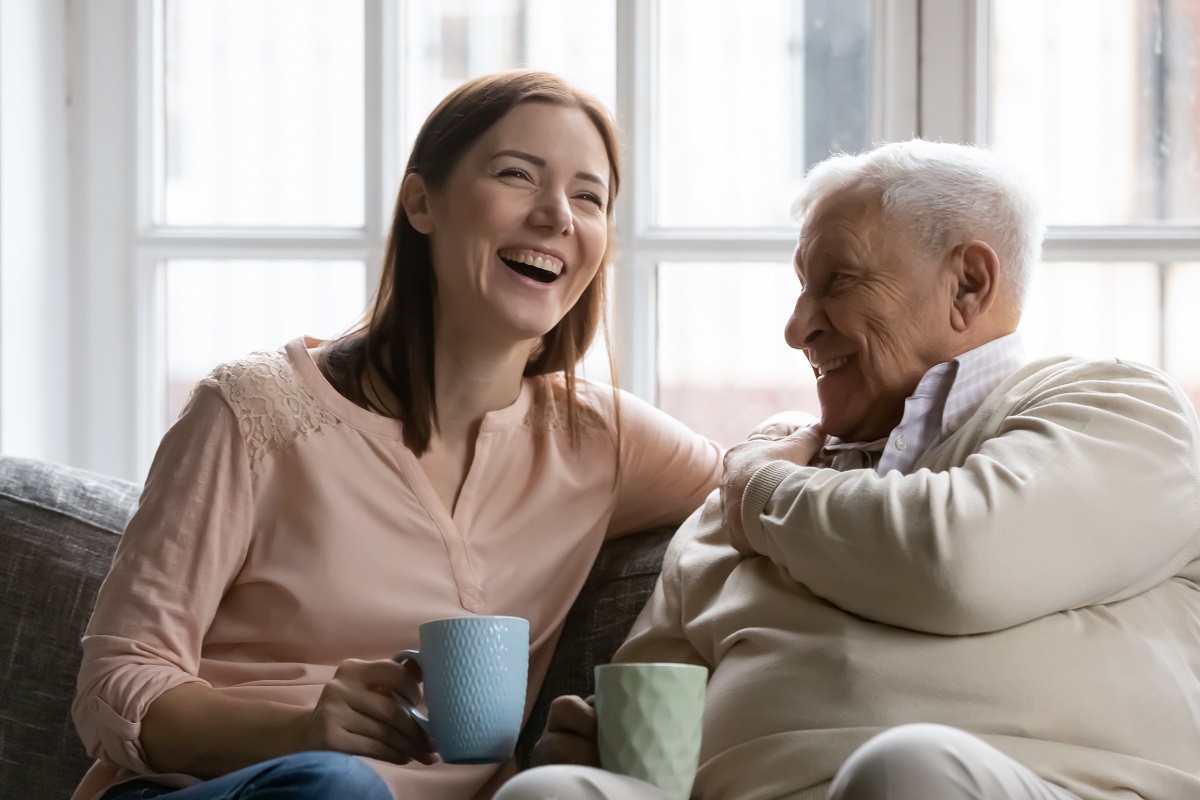Look down: making floors safe for someone with dementia
Find out how a few simple changes to the floors in their home could prevent someone with dementia having a nasty trip or fall
Choosing carpets, rugs, lino or floorboards is usually a matter of personal taste. Your loved one might be very fond of the stair carpet they bought twenty years ago or the tiled bathroom floor they recently spent a lot of money installing. But once their dementia journey has begun, it’s wise to look again at the surfaces they walk on at home because the last thing you – or they – want is a fall. Falls don’t only cause physical injury (sometimes very serious) they can also shatter the confidence of someone living with dementia and lead to a rapid physical and mental decline.
Did you know? Dementia can bring visual challenges, as the problems within the brain that cause memory loss can also affect sight. This, coupled with general age-related eyesight deterioration, can make it increasingly difficult to discriminate different textures on the floor. So shiny surfaces can appear wet, and dark surfaces can look like holes. Floor patterns such as those found on linoleum or carpet can cause illusions, while visual-spatial problems mean rooms can appear flat or 2D.
Making floors safe: four areas to think about
1. Patterned flooring
2. Pros and cons of colour contrasts
3. Benefits of matt floors
4. Removing potential hazards
1. Patterned flooring
Why: Patterned carpets can cause confusion if you have dementia, as it becomes increasingly difficult to distinguish between design and actual objects that they need to pick up or step over. For example, a dark carpet with white specks may look like bits of tissue, which they will keep trying to pick up. Patterns such as flowers can also be deceptive, as they could believe they’re actually seeing real flowers on the floor.
– Similarly, if kitchen linoleum or bathroom tiles are in a black and white checkerboard motif, the black areas may seem like holes in the ground which need to be stepped around. Imagine how confusing and frustrating that could feel.
2. Pros and cons of using contrasting colours
Why: Visual problems mean you need to help people with dementia pick out certain areas clearly. For example, if their kitchen has a small step, making it a different colour to the surrounding flooring will help them spot it.
– You can use different coloured skirting boards to pick out the edge of the room and help give it more perspective for someone with dementia.
– Likewise, picking out furniture in a colour that contrasts with your flooring will make it easier for someone with dementia or Alzheimer’s see it.
But, colour contrasts can also work against you if they make the person you’re caring for think that there’s a step or hole where there isn’t one.
Make sure that threshold strips – the strips of metal or plastic that fix flooring between different rooms – are the same colour as the rest of the floor surface. And if possible, try to ensure that the colour changes of floors between each room aren’t too bold.
3. Benefits of matt floors
Shiny flooring can appear wet to someone with dementia. This could mean they’ll become hesitant and unsteady, which can lead to falls.
– For areas of the house that aren’t carpeted, surfaces should, ideally, be matt to reduce the risk of harm.
4. Removing potential hazards
Falls pose a real risk for people with dementia, so it’s vital that you move any objects that could cause a tripping hazard.
– Assess all rooms and move or remove potential trip hazards including rugs, pairs of shoes or slippers or low furniture such as coffee tables.
5. Check slippers regularly
More than 27,000 land in hospital every year because of slip-ups in their slippers. Carpet slippers are one of the biggest causes of accidents in the home every year, and for someone with dementia worn-out slippers can be lethal. So make sure they have good grips on the soles and plenty support at the back. The ankle booty type is probably one of the safest, providing they’re been put on correctly.
SHARE
Explore more




